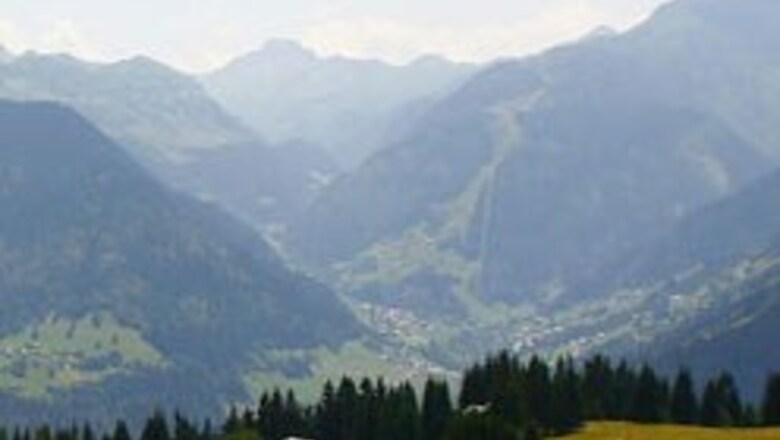
views
Washington: It may sound unbelievable, but the mighty Alps that cover seven European nations are only a shadow of their former self.
Geologists have said that major climate changes in the Alps six million years ago rapidly led to its erosion.
A University of Washington geologist, Sean Willett, has said that a sudden drop in the level of the Mediterranean Sea six million years ago prolonged by a warmer, wetter climate, led to massive erosion in the Alps.
Typically mountain ranges reach a sort of equilibrium, with erosion more or less keeping pace with the tectonic forces that enlarge the mountains.
But an event called the Messinian salinity crisis, precipitated by blockage of the forerunner of the Strait of Gibraltar, cut the Mediterranean off from the rest of the world's oceans. Evaporation greatly reduced the water level, dropping it as much as two or three miles below the rest of the world's ocean surfaces.
The beds of rivers flowing from the Alps dropped sharply as the level of the Mediterranean basin fell, and their force carried away huge amounts of sediment. The forces carved many of the distinctive deep valleys for which the Alps are known and left behind nearly a dozen major alpine lakes in the Southern Alps, Willett said.
"The erosion rates were 10 times normal in the salinity crisis, and that correlates to the fall of the base level of the rivers. We think that jump-started the erosion, but it doesn't explain why the erosion stayed so high for three million years. The Mediterranean was low only for 20,000 to 80,000 years before it refilled," Willett in his study in the journal Geology said.
"The Mediterranean substantially refilled with fresh water, likely from heavy rainfall, indicating major climate change. The result was a brackish water mixture that probably continued to evaporate at high levels. About 200,000 years later, the Atlantic Ocean finally breached Gibraltar and seawater poured in, apparently refilling the Mediterranean completely within a few years. Probably the biggest erosion came when there was both the heavy rainfall and the low base level of the rivers," he added.
PAGE_BREAK
The team also studied geological structures associated with the Alps, particularly faults at the southernmost edge of the mountain range, in northern Italy.
They found numerous faults buried beneath the surface of the plain adjacent to the Po River, which flows through Italy's largest industrial region and is the nation's longest river.
"The fault that lies farthest south, now inactive, is beneath the city of Milan, evidence that the Alps used to extend that far south. Now the mountains are 30 to 50 miles away. At one time what is now Milan would have been in the foothills of the Alps. But the Alps never regained the size they had at the end of the Miocene," he wrote in his study.
Findings also revealed that the greatly increased erosion came at the same time that the faults associated with the Alps stopped moving.
"Less erosion would be expected as tectonic forces decline, but instead there was vastly more sediment removed from the mountains at the time the fault motion stopped. Before the massive erosion, the Alps likely were 60 to 120 miles wider than they are today, and 1,000 to 5,000 feet higher. The highest point today is Mount Blanc on the border of France and Italy, at about 15,700 feet. It is likely that erosion took a toll on the northern edges of the Alps as well," Willett said.
"After three million years of warm and wet conditions, the climate cooled again and glaciers formed in the Alps, though they are again in decline now because of climate warming. Willett noted that European precipitation is strongly linked to changes in the global mean temperature, which scientists can track over time through ice records," he added.
"What is fascinating to me is that we show how complicated and coupled the Earth system is. You have to understand one part of the system to understand how other parts of it work together," he said.
















Comments
0 comment